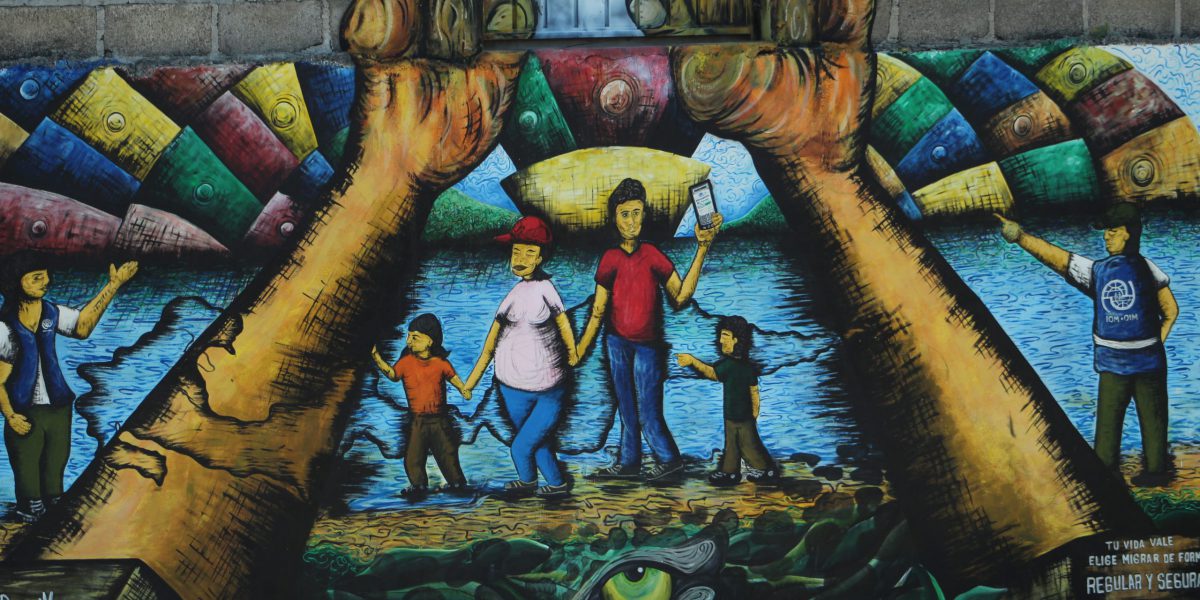JRS/USA: On the Anniversary, Take Action to Oppose Remain in Mexico
24 January 2020|Katie Mullins, JRS/USA Psychosocial Support Specialist

Today, marks one year since the Migrant Protection Protocols (MPP), or “remain in Mexico” policy, was enacted by the Administration. Katie Mullins, JRS/USA Psychosocial Support Specialist, reflects on a recent trip to the U.S.-Mexico Border and the impact the policy has had on those trying to seek safety in the U.S.
Tents are visible from the bridge as you take the short walk from El Paso, crossing over the Rio Grande into Ciudad Juarez. These tents are just one visible reminder of MPP which has drastically altered the face of the immigration process for those seeking asylum in the United States. They’ve come so far, only to be sent back. Fearful of leaving their dream which is now within eyesight, many choose to stay in these temporary encampments as they wait for their cases to be processed. There may be a sense that there is safety in numbers, but they are anything but safe. Many have been subjected to kidnapping and ransom by local gangs that infiltrate these temporary shelters.
Another visible cue I saw are the overcrowded shelters in Juarez where vulnerable asylum seekers wait for their day in court for their case to be heard. The shelters are a packed oasis behind tall cement and metal walls, security cameras, and buzzers to get in, with children playing hide and seek as their parents hang the wash outside. Many people feel safe in the shelters but are fearful to leave, even for the day. Outside they face the threat of kidnapping and extortion from local gangs. During our visit, one of the sisters working in the shelter was having a discussion with several young mothers in a small side room of the chapel under the Virgin Mary. Just outside, in the chapel itself, thin, twin-sized mattresses and sleeping bags lined the floors where the men slept. The women expressed their concerns to the sister because they had heard there might be a time limit placed on their length of stay. The sister said this was true but could not give them any information; no timeline of when this might go into effect, or any indication of who this might impact first. This is another example of the challenges MPP imposes as shelters are facing an ever increasing number of people forced to remain in Mexico while they await their day in courts which are scheduled for months after they first appear at the border.
There are more signs of the devastation of MPP. The wary faces of the service providers show the struggle of trying to locate their clients who are consistently moving around the city and sometimes across the border as they look for a safe place to shelter while they await their trial date. Lawyers already facing astronomical odds of success, play the role of social worker and case manager as they struggle to support their clients in an already struggling city with a limited network of the providers needed. Just getting the documentation for a health or mental health evaluation takes pulling strings and calling in all sorts of personal favors because these services are not even adequate for the local population they were established to serve. One lawyer I met was moved to tears as she recalled how one of her clients struggled to get the health care she needed and died in the shelter. The client’s struggle continued even after her death as the lawyer was scrambling to find resources to expatriate the body home. With MPP, asylum seekers remain in a perpetual state of limbo which can continue on even after death.
Take Action
YOU can take action and send a letter to your policymaker today, asking them to do everything in their power to protect asylum, reverse this policy, and restore U.S. leadership in offering protection.



